Gennaro Cuofano's Blog, page 172
February 8, 2021
5G Business Models In A Nutshell
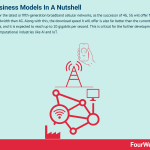
5G stands for the latest or fifth-generation broadband cellular networks, as the successor of 4G, 5G will offer far greater bandwidth than 4G. Along with this, the download speed it will offer is also far better than the current technologies, and it is expected to reach up to 10 gigabits per second. This is critical for the further development of heavy-computational industries like AI and IoT.
Why does 5G matter in business?Before mobile phones were invented, wired telephones were the norm. Connectivity around the world was less and very costly. This slow and expensive method was transformed by the introduction of wireless technologies. Further ease and convenience were ensured when mobile internet became available.
The next step was to pick up the pace of these networks. Widespread demand led to the integration of faster internet connectivity within smartphones. Each step or what is known as “generation” in the internet connectivity provided better service to its consumers. Currently, 4G or fourth generation is the technology used widely around the world. The next step in these technologies is 5G.
5G is the fifth generation standard that telecommunication cellular companies began to deploy in 2019. It will serve as the successor to 4G technologies. In terms of features, 5G will offer far greater bandwidth than 4G. Along with this, the download speed it will offer is also far better than the current technologies and it is expected to reach up to 10 gigabits per second.
The applications will not only be limited to cellular networks but with such high speed and cutting-edge technology, it is also expected to be used as the primary internet connection for laptops and computers. 5G technology is considered to be one of the main steps towards new technologies in the Internet of Things (IoT). This will result in transforming the world into a new technological era through innovation and development, one step at a time.
How does 5G work?The technology works by the use of higher frequency radio waves than were used by the previous versions. This, however, comes with its own set of issues. The biggest being the short range of these waves. Since this a cellular network, the geographical areas that are served by a single tower/antenna is known as a “cell”. At high frequencies there is a shorter physical range, which means that the cell will be smaller and hence more antennas will be required than were required for 4G.
Tradeoffs still exist if a compromise is made on download speed and service area. Though the cells are smaller, the process of the cellular devices connecting to the antenna and moving on to the next antenna as the device moves is still the same. The advantage that 5G technology has over 4G is that per square kilometer, 4G was only able to support up to 100,000 devices while in 5G technology up to 1 million devices will be supported per square kilometer.
Latency is also considerably improved when it comes to 5G technologies. On average around 30ms is observed for devices within a cell. Devices near the towers report around 10-20ms. However, this is only short ranged right now it is expected to improve as the technology develops.
Edge Computing is another technology, which will be deployed using the services of 5G. Coupled with 5G, servers will be computed closer to the end-users. This will not only reduce the latency issues but due to the increasing number of IoT devices, it will ensure that only the relevant data is sent to the cloud quickly and precisely.
Commercial applications of 5GOne of the biggest applications that 5G will have is in Supply Chain Management. Quick connectivity and fast processing will allow parts to be monitored more effectively and ensure smoother integration and data transfer. With the vastly advancing and developing world of automated vehicles, real-time data is required to make the entire system work. This will be possible with 5G technologies. It is another step towards the successful integration of Smart Cities.
The communication will be carried out between the vehicles and the city-wide infrastructure like traffic lights and sensors to ensure smooth operations. Another major application is in the field of Energy. Smart Grids require information to be transferred extremely quickly to ensure the equipment remains safe. This along with the seamless flow of information grid to grid or even generating stations will ensure safety and connectivity.
5G technology is at the core of automation. Every industry that has moved towards automation or is in the process of doing so will be including 5G technology in its portfolio. From high tech industries like parts manufacturers to industries like farming, 5G is the future that everyone will have to adopt. Sensors equipped with 5G technologies provide data that is used to further improve the techniques which are being deployed.
Increased use of Artificial Intelligence (AI) and machine learning also require quick data transfer and great potential is seen in this regard. With the introduction of remote therapy in the health sector and due to the complications such as COVID, which makes physical presence unfavorable, 5G technology can chip in. This will also connect rural areas to big cities in the sense that patients usually have to travel many kilometers for better health services. This gap will be bridged through the successful integration of the new technology.
The fascinating thing is not that 5G exists in the future to come, 5G will open doors not only for communication but innovation. It keeps up with the pace at which technology is evolving and how it demands faster processing.
IoT has a big role to play in the further advancement of the human race and 5G will be a major part of this initiative. From automated vehicles to smart grids all the way to smart cities, successful integration of these technologies in parallel will add to the ease and convenient lifestyles that humans have dreamt of achieving.
Main Free Guides:
Business ModelsBusiness StrategyBusiness DevelopmentDigital Business ModelsDistribution ChannelsMarketing StrategyPlatform Business ModelsTech Business ModelThe post 5G Business Models In A Nutshell appeared first on FourWeekMBA.
Edge Computing Business Models In A Nutshell

Edge computing is a paradigm for distributed computing where data is stored closer to its physical location, enabling better performance and scalability for data processing. Thus, edge computing is critical to enable other major technologies to scale, like IoT and 5G. Thus making it possible to process a wider amount of data at a lower cost. This is why edge computing is also critical to the development of the AI industry.
Edge computer as the foundation of IoTWith advancements made and far outreach of IoT (Internet of Things), it became increasingly important to develop a method, which allows data to be analyzed at the “edge” rather than at a location, which can be physically hundreds or thousands of miles away. Before introducing Edge Computing, it is important to understand the concept of IoT.
The idea of IoT is to bring closer devices, which use private internet connections and make them “talk” or exchange information. The devices are equipped with sensors and can be monitored in real-time. IoT enables companies to achieve higher levels of efficiencies and productivity. One other major advantage that IoT provides is remote control from anywhere in the world.
With the applications of IoT increasing and more reliance on remote control, methods needed to be introduced to tackle the challenge of fast and affective computing. This is where Edge Computing comes into play. Since the data that is transferred to and from the cloud is huge, operations, which require fast and real-time data, can suffer due to latency issues.
The complexity of data can be summarized through a very simple example. Consider a security firm, which has to monitor footages of the cameras it has installed. If a single camera footage is to be sent back to the control room, it can be achieved easily. However, in same scenario, if the live footage is to be transmitted from several different cameras, it becomes an entirely different story.
In the same way, if the same scenario is applied to the devices of IoT, hundreds and thousands of them will be sending and receiving data simultaneously which makes it absolutely essential that the data be handled and processed in a time-efficient manner. To solve this issue, Edge Computing basically introduces a process by the means of which data is analyzed locally and only the relevant data is sent back to the cloud for communication. This reduces bandwidth needs by a large amount and can save companies a fortune.
Edge computing takes cloud computing to the next levelCompanies are always looking for means to cut costs to get competitive advantages over its competitors. It is important for long-term sustainability to continue innovating and bringing forth products or services which are different from what the competitors offer. When cloud services were introduced and many businesses diverted towards it, the bandwidth costs increased dramatically.
Fast response and quick service was still the key and cloud services did provide advantages to customers and companies alike, however, the costs of bandwidth were turning out to be nailed to the coffin. Real-time and fast processing is the need of the time. The uses are not only limited to sending and receiving data on small smart devices but go as far as self-driving cars and smart cities.
The drawbacks of edge computingThough Edge Computing comes with its processing advantages, it has certain liabilities too. When data is at the “edge”, it is vulnerable. Cloud services have been increasingly made safer through cybersecurity methods, which provide a guarantee that the data will not be breached. The same cannot be said for Edge Computing. With the increasing number of IoT devices, security becomes a grave issue if it is not considered.
This is especially worrisome given the increasing number of security breaches that happen and can happen at the user end. Another issue that comes with this technology is that since data has to be transmitted and if the device goes down, data can have trouble reaching and being processed. Failure at a single node can become a bottleneck. However, as the technology develops, improvements will be made to make it safe and failproof.
Edge computing and its killer commercial use casesOne of the biggest and exciting applications of Edge Computing is smart cities. Fast processing and swift data transfer will enable administration far more effective in real-time. As conditions change, due to Edge Computing the devices will react to the changes and make adjustments accordingly.
Another major application is in the field of healthcare. Through IoT devices, data can be stored and then processed and delivered to wherever necessary. The data will be available to be accessed by healthcare professionals and analyzed in real-time instead of going through the hassle of fragmented databases.
Given the COVID pandemic, video conferencing became the norm as its use became widespread. From meetings to classrooms, everything began to be conducted online. This also resulted in servers being overloaded and, in many cases, the quality of the video became an issue.
With Edge Computing, these issues can be resolved and better connectivity ensured. It can also increase the privacy of users by encrypting data and keeping the source instead of sending information to the cloud that is not protected. In the simplest of cases, user data can be saved from potential targeted advertisements. Users who do not want to be targeted through advertisements value this feature and are potential users of this technology.
In the future, it is expected that Edge Computing will progress into using data available through artificial intelligence along with machine learning and help in making decisions that will benefit both companies and their customers.
One of the biggest potentials that exist for Edge Computing is the increased introduction of 5G services, which will enable much faster connectivity and communication as compared to the current systems.
Coupled with 5G services, the world of communication and control will be revolutionized by Edge Computing. More and more emphasis is also increasing on the security issues that arise with this technology as it will affect sustainability in the long run. As technology advances, so do the threats.
The use of widespread Edge Computing is only possible through the digitalization of data since it needs to be accessed and processed in real-time. Technologies aiding in this marvel need to be developed so they are up to speed with the consumer tastes and demands.
Challenges will arise when data consolidation around the edge and cloud emerges. Managing the data and in turn strategizing in order to achieve the maximum possible efficiency will be key in driving the technology forward and widespread.
Main Free Guides:
Business ModelsBusiness StrategyBusiness DevelopmentDigital Business ModelsDistribution ChannelsMarketing StrategyPlatform Business ModelsTech Business ModelThe post Edge Computing Business Models In A Nutshell appeared first on FourWeekMBA.
3D Printing And The Rise of Decentralized Production
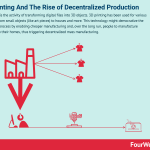
3D printing is the activity of transforming digital files into 3D objects. 3D printing has been used for various use cases, from small objects (like art pieces) to houses and more. This technology might democratize the production process by enabling cheaper manufacturing and, over the long run, people to manufacture objects from their homes, thus triggering decentralized mass manufacturing.
3D printing and the potential in businessScience and technology have been making human lives easier for centuries. From what started with living in caves and jungles, has developed into skyscrapers and comfort which is awe-inspiring. Humans have relied upon visuals and precision to make leaps into development.
One of the most important innovations that humans have achieved is the entry into the world of 3D printing. Understanding data grew complex as processes became advanced, and to tackle this new challenge, 3D printing was introduced.
How does 3D printing work?To make data more readable and products more understandable, innovation has constantly revolutionized how humans visualize complicated structures. 3D Printing is the process, which enables users to make three-dimensional objects using a digital file. The printer recognizes the data and converts it into a model.
As industries developed, the need for complex parts in different industries elevated which could not be constructed by hand. Before 3D printing was commercialized, models were made with wires and surfaces. As the method became more common, polymers began to be used along with metals and ceramics.
The choice of materials depends upon not only the application that it is being used for but also the strength of the material itself. The technology has now further been revolutionized by the introduction of multi-material printing. This process involves printing one model out of multiple materials instead of the conventional method where a single material is used. The same printer can now have two different inks at the same time.
3D printing basically works by printing layers upon layers and constructing the model. The material comes out of a tiny nozzle and moves to build the model. The process is entirely automated and controlled precisely through a computer. The model starts at the base and is built layer by layer all the way to the top. The materials used are molten and should have the capability of quickly hardening so that the model can be built appropriately layer upon layer.
Potential commercial use cases for 3D printingDue to the convenience that 3D printing provides in terms of quickness and affordability, the uses are vast. One of the biggest industries that have great potential for growth is the health industry. 3D printing has been deployed in developing not only prosthetic limbs but also ears!
The technology has been used to develop muscles and tissues, which leaves little to wonder how far-reaching the advancements can be in this industry. Another big application is in the educational institutes. 3D printing is now being made accessible in universities and is used to produce complex models so they can be made easier to understand.
From complex chemical structures to basic building blocks, 3D printing achieves everything in an effective and efficient manner. Various architectural firms use this technology to visualize their drawings. In the past, 2D models on paper would be used to get the work done. With 3D printing now more accessible than ever, the drawings are given a much more understandable form. Complex models and their feasibility are tested with this technology before being approved.
Several new prototypes for different materials cannot be mass-produced without proper testing and evaluation. To achieve economies of scale, companies can only afford to invest in new machinery if they know for sure what they produce will work and be sustainable. 3D printing takes care of this dilemma. Model designs can be printed and not only with plastic but also with other materials can be used to construct the required models.
Given the potential of this technology and its aesthetic and to the point construction, 3D printing has been used to produce art pieces. Simple drawings can be converted into artsy structures, which are beginning to be the new norm at art shows. Even if an entire structure is not to be built with 3D printing, a miniature model produced through 3D printing can be of real help before a large structure is built.
What’s next for 3D printing?The future holds endless possibilities for this technology. Predictions by top analysts indicates the introduction of 3D printing not only into something as simple as footwear but as complex as an entire house.
Bio-printing has been the single most talked about contributor when it comes to the future of this technology. As mentioned previously, 3D printing is already being used in the health industry and body parts like ears are being developed through it.
The next step which scientists and developers are keen on is constructing the heart. Just like a functional human heart, it will be able to pump the blood. If achieved, this will be one of the greatest achievements in human history as it represents an extremely significant advancement.
To battle world hunger, NASA scientists are even working on producing 3D printed food, which will not only be edible but will also, be nutritious. This makes the uses of 3D printing not only specifically catered to the user’s needs but also can be used for the common good.
Engineers have been increasingly involved in making the method more environment friendly by using materials, which do not harm the environment. As the oceans have been becoming increasingly polluted, companies like Adidas have announced to convert that plastic into shoes. The process will involve converting the plastic waste into polymers, which can be in turn used as the material for 3D printing.
3D printing also has far reaching potential in other environmental aspects. The most recent and biggest example is the recovery of coral reefs. Due to water pollution, the coral reefs underwater are becoming increasingly damaged and were expected to be more than 90% damaged in a few years if the same pace continued.
However, using advanced technology, scientists have developed a method with which the coral reefs are preserved and made to grow over time. The last two examples give an oversight as to how 3D printing can be used as an advancement in technology and represents its applications in making environment-friendly decisions to put forth a cause in making Earth a better place for its inhabitants.
The business megatrend 3D printing might help to shapeDecentralized mass manufacturing is potentially the most powerful trend that 3D printing might help to shape. Where manufacturing is one of the most complex and industrialized functions eever existed. Over time, 3D manufacturing might democratize the manufacturing process, making any sort of object from small to large prompt to be manufactured at home.
Of course, before this potential transition might be complete, it might take decades and not necessarily fully develop. The fact that 3D printing would enable decentralized mass manufacturing is one of the things that make 3D printing very interesting as a potential technology to shape the future business world.
Main Free Guides:
Business ModelsBusiness StrategyBusiness DevelopmentDigital Business ModelsDistribution ChannelsMarketing StrategyPlatform Business ModelsTech Business ModelThe post 3D Printing And The Rise of Decentralized Production appeared first on FourWeekMBA.
February 6, 2021
How Does Poshmark Make Money? Poshmark Business Model In A Nutshell

Poshmark is a social commerce mobile platform that combines social media capabilities to its e-commerce platform to enable transactions. It makes money with a simple model, where for each sale, Poshmark takes a 20% fee on the final price, for sales of $15 and over, and a flat rate of $2.95 for sales below that. As a mobile-first platform, its gamification elements and the tools offered to sellers are critical to its growth.
Origin StoryManish Chandra, Founder and CEO of Poshmark explained how his childhood growing up in India, with the summers spent with his grandfather in a pharmaceutical shop in Chandni Chowk, a traditional market in Old Delhi, he learned what makes up a marketplace.
By observing people interacting, transacting, negotiating, he learned what makes up a vibrant market. In the decades following, e-commerce would become the primary mode of consumption, and Manish Chandra wondered if he could still make the whole online shopping experience social.
As he highlighted as the iPhone 4 launched, around the 2010s he realized how technology could be used to connect people, enable them to share, while shopping. From an engineering standpoint, Manish Chandra developed his own blueprint centered around a social, and sustainable experience, where technology would enhance both the value proposition for users and sellers on the platform.
After building his team, comprised of Tracy Sun, Gautam Golwala, and Chetan Pungaliya, in 2011, they launched Poshmark.
Market OpportunityPoshmark’s opportunity sits across three markets and trends, which are all under the umbrella of retail. As an online platform, driven by social commerce, selling primarily secondhand stuff, those three elements make up the market characteristics of Poshmark.
Value modelPoshmark value model moves along the lines of a shopping experience, improved by technology. As a digital platform, Poshmark creates value for two types of individuals: users/customers and sellers.
On the one hand, Poshmark offers a discovery and purchase process primarily driven by a social experience. As Poshmark highlights in its prospectus, perhaps in 2019, 87% of items purchased on the platform were preceded by a like, comment, or offer on its marketplace.
This discovery process is also user-generated, where users/buyers can curate their newsfeed with similar tastes and styles. Poshmark’s marketplace provides a listing with millions of secondhand items.
Mission and vision and core valuesPoshmark’s mission is “to put people at the heart of commerce, empowering everyone to thrive.”
Poshmark’s core values are:
Focus on People . Lead with Love . Grow Together . Embrace Your Weirdness .Value propositions and key stakeholders
Poshmark’s primary goals is to make “buying and selling simple, social, and fun.”
In the offline shopping experience, product discovery is inherently social. Shoppers seek the same in the digital world and increasingly turn to one another for recommendations and validation online. Social technology platforms take a central role in facilitating personal, meaningful interactions at scale through photos and discovery-based content. Also, consumers increasingly favor resale shopping, fueled by the desire for sustainable consumption and increased orientation towards value.
From the seller perspective, people continue to find ways to pursue their passions with a digital “side-hustle” or digital entrepreneurs. The growing demand for social shopping online creates a meaningful opportunity for sellers to expand their potential customer base from local to global, with the data-driven ability to reach, acquire, and retain buyers.
Key takeawaysPoshmark is a social commerce platform that enables buyers and sellers to engage and interact easily. In that way, the transactions’ flow is ensured and Poshmark, which takes a cut on each transaction on the platform, makes its revenues. Poshmark combines elements of e-commerce, social media, and machine learning/big data to enable engagement on the mobile-first e-commerce platform. Its distribution model is given by the variety of items available on the platform. And at the same time, the fact that sellers can easily set up their e-commerce and build their community makes the platform appealing to sellers.Main Free Guides:
Business ModelsBusiness StrategyBusiness DevelopmentDigital Business ModelsDistribution ChannelsMarketing StrategyPlatform Business ModelsTech Business ModelThe post How Does Poshmark Make Money? Poshmark Business Model In A Nutshell appeared first on FourWeekMBA.
February 5, 2021
Clubhouse Business Model And The Rising “Social Radio” Platform
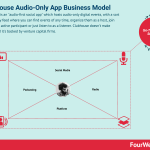
Clubhouse is an “audio-first social app” which hosts audio-only digital events, with a sort of discovery feed where you can find events of any time, organize them as a host, join them as an active participant or just listen to as a listener. Clubhouse doesn’t make money, and it’s backed by venture capital firms.
A quick look into ClubhouseClubhouse is an audio-based social media app. No texts, no video, no images, just audio. It feels like a podcast where multiple people are allowed to speak about a topic or have hangouts without the need to share pictures, videos, or texts – All interaction is audio-based.
At the same time the format of content looks more like a story, where the content is live and you won’t find it (as of now) in a recorded version. Thus, Clubhouse looks more like a modern version of radio, where though the social part is a key element.
People can freely form digital audio-rooms where the can talk about anything. Those virtual audio rooms, are managed by a few moderators working as hosts, some people can participate in the session by speaking up and many others can just join in to listen to the conversation.
According to the creators, “Clubhouse is a new type of social product based on voice [that] allows people everywhere to talk, tell stories, develop ideas, deepen friendships, and meet interesting new people around the world.”
A brief overview of ClubhouseAlthough Clubhouse gained a lot of attention since the start of 2021, it was launched in April 2020.
However, due to the large amount of audio data being processed at a time, the app has been made an invite-only app, meaning that you cannot access the app unless you are invited. According to its developers, it is still at the beta testing stage, and the limits surrounding the app will be removed after a while.
The application is only available on iPhone currently, the android app is now being developed; upon completion, it’ll be launched with the full version of the app. Android users worldwide are way more than iPhone users; therefore, it makes sense to start with the iPhone since it is an invite-only platform.
Due to the policy of Clubhouse to control the number of active users on the platform, it was made an invite-only app, that is; anybody can download the app, but you cannot register unless you get an invite from your friend.
Every user is allocated one invite upon successful registration, although based on activity on the app, more invites are given to some people. Each person is responsible for everyone he invites to the app because every user has the details of the person who invited them on their profile. Hence, it is crucial that you only invite reasonable, responsible people that won’t soil your reputation publicly.
This has immensely helped control the crowd, fake accounts, unnecessary trolls and parodies because of the limited amount of invites, and nobody wants to invite a nuisance onto the app.
The app interface explainedAfter launching the app, that takes you to the hallway, like a physical hallway where you wait for a meeting, just like “Explore” on Instagram or your “Timeline” on Twitter. So that is sort of an audio feed.
There are many rooms in the hallway, and you can join in public rooms that suit your interests just as you would join different threads of discussion on Reddit through numerous subreddits, like r/Ecommerce r/digital marketing and so on.
There are many such rooms on Clubhouse where thousands of conversations are going on. With more time on the app, you’ll get better room suggestions to join based on your preferences.
How does a Clubhouse Room look likeUnlike many social media apps that communicate through video or audio, the mode in Clubhouse is more organized.
Each room has a moderator, and each moderator can have a few co-moderators. Any person who wants to contribute has to “raise his hand” to get a recognition to speak; the moderators may as well turn off the option for raising hands temporarily until they wish to turn it on.

“Raise Your Hand” button
This helps to Improve organisation by permitting questions or additions only when needed, making it a very controlled space.
What’s the Clubhouse value proposition?Clubhouse is a space where unlimited learning gets fostered. Due to the fact that you cannot get registered randomly, it makes it rare to have people who have nothing to contribute to the website, because users are very cautious of who they give invites to.
However, once the invite-only model has exausted we can expect Clubhouse to become as any other social media platform, with user-generated content as a primary format on the platform.
As of now, it gained traction quickly, thanks to its successful launch where it attracted high ranking individuals in the world – billionaires, icons in the tech space, digital marketing experts, celebrities, influencers, ex-CEOs of companies and many more men of substance are in these rooms, discussing their experiences and decisions with people and giving room for others to learn.
Oprah Winfrey, Kevin Hart, Chris Brown, Tiffany Haddish, Ashton Kutcher, and many celebrities in the entertainment space have been active on Clubhouse, having engaging discussions in the rooms. Even Elon Musk visited a Clubhouse room a few weeks ago, where he discussed and shared his views with the people in that room.
Clubhouse has proven to be a platform where knowledge can be boosted, by giving you the opportunity to be in discussions with people you won’t ordinarily have access to; learning from their vast experience and using it to boost your business.

If you are in a room where you don’t enjoy the discussions, you may “leave quietly.”
Commercial applications for ClubhouseClubhouse is a new social media platform, as such, it will find its sweet-spot in terms of commercial use cases. Let’s explore some of the ways now people are using Clubhouse for business.
Business meetingsClubhouse may be used for business meetings. You can create a scheduled appointment with a date and a time, invite your colleagues to the room, and set a reminder for the conference, just like you would in Zoom or Google meets. People who are camera shy or more confident without a video may raise their points more efficiently when a business meeting is done via Clubhouse.
Finally, you can join several clubs in Clubhouse. Clubs on Clubhouse are a smaller community of people who interact and raise topics for discussion, just like a Facebook group. However, it is totally audio-based. Therefore, it is a subgroup where you can have personalized conversations.
You have a brief overview about Clubhouse, how to join, what Clubhouse is all about, and how it can serve as a personal and business development tool while facilitating connection with successful people; hence, boosting your business.
A new way of doing podcastingClubhouse does look like a podcasting platform. But it’s way more than that. It improved in a way toward podcasting because it added a social component (user-generated content and interactions) and a format that looks more like radio and stories.
A new format for digital eventsFor those involved in digital events Clubhouse is extremely interesting because it can be used as a new platform to build up an engaged community of users.
The rise of social radio platformsClubhouse looks a lot like the modern version of radio, with a strong component of social media. While radio, as a media, has been adapting to other formats like podcasting. Clubhouse brings that to the next level. A “social radio platform” that fully user-generated, with thousands of digital audio rooms and shows, where any show can be produced, from wider audience topics to niche and microniche level subtopics.
How does Clubhouse make money?Clubhouse is still in the beta stage, and even though it has been already valued a billion dollars, it doesn’t make any money.
Andrew Chen, from venture capital firm a16z, which invested in the platform, explained:
The team has been building features to make it easier to moderate rooms and clubs, as well as working with creators to develop a business model that rewards the entire ecosystem as Clubhouse’s community grows. I love that this orientation contrasts with the typical ad-based business model that has supported social networks in the past. This centers the experience around community and quality, rather than clicks and volume.
Therefore, a16z is proposing alternative ways to monetize the platform that can be classified as below:
 Source and Image Credit: a16z.comHow can you make money on Clubhouse?
Source and Image Credit: a16z.comHow can you make money on Clubhouse?Just like on a social media, podcasting platform or radio you might be able to make money by organizing digital events and therefore via:
Gathering sponsors for your events.Lead generation.Brand awareness/Brand building.Community building. Product placements. Key takeawaysClubhouse has gained traction quickly as an audio-only social app, working as invite-only in its beta version. It doesn’t monetize yet, but it might explore monetization strategies beyond advertising and more skewed toward enhancing a community of content creators (subscriptions, membership, and more).
Clubhouse is at the same time a radio platform, a social media platform, a podcasting platform, and a business networking app, and an entertainment app, where users can gather to discuss any topic of their choice.
Main Free Guides:
Business ModelsBusiness StrategyBusiness DevelopmentDigital Business ModelsDistribution ChannelsMarketing StrategyPlatform Business ModelsTech Business ModelThe post Clubhouse Business Model And The Rising “Social Radio” Platform appeared first on FourWeekMBA.
January 31, 2021
10 Marketing Tools Compared

 Email Marketing vs. E-commerce Markering
Email Marketing vs. E-commerce Markering
 SEO vs. Amazon SEO
SEO vs. Amazon SEO
 Affiliate vs. Multi-Level Marketing
Affiliate vs. Multi-Level Marketing
 Blue Ocean vs. Blue Sea Framework
Blue Ocean vs. Blue Sea Framework

Read Next: Flywheel, Sales Funnel, Email Marketing, E-commerce Marketing, SEO, Amazon SEO, Affiliate Marketing, Multi-Level Marketing, Blue Ocean, Blue Sea.
Main Free Guides:
Business ModelsBusiness StrategyBusiness DevelopmentDigital Business ModelsDistribution ChannelsMarketing StrategyPlatform Business ModelsTech Business ModelThe post 10 Marketing Tools Compared appeared first on FourWeekMBA.
10 Strategy Tools Compared

 AIDA vs Pirate Funnels
AIDA vs Pirate Funnels
 Business Model Canvas vs Lean Startup Canvas
Business Model Canvas vs Lean Startup Canvas
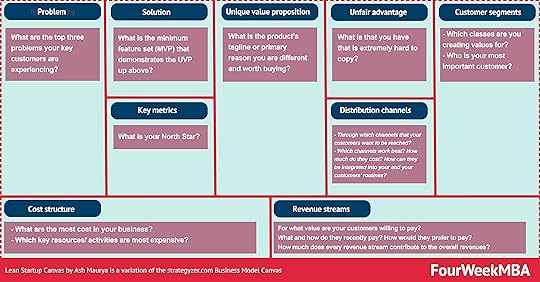 Action-Priority Matrix vs Eisenhower Matrix
Action-Priority Matrix vs Eisenhower Matrix
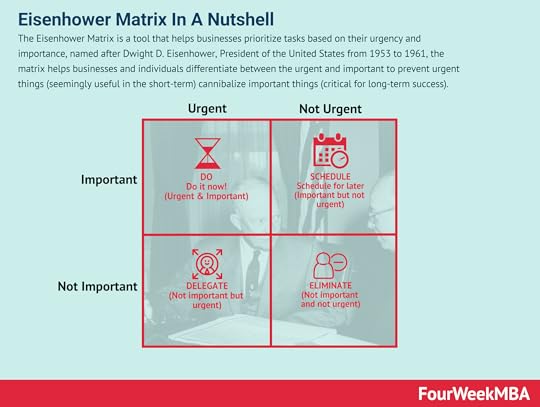 Porter’s Five Forces vs. Pestel Analysis
Porter’s Five Forces vs. Pestel Analysis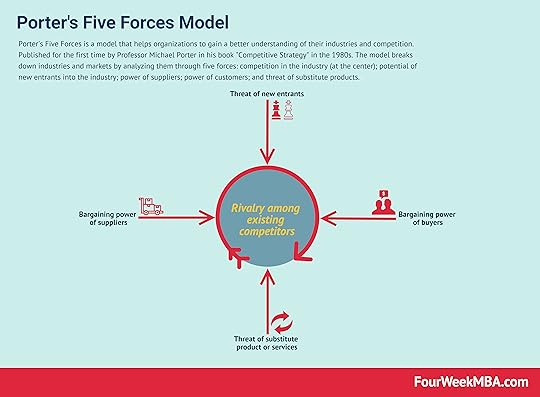
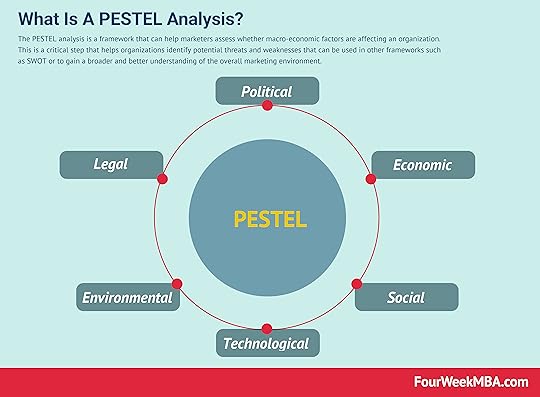
Main Free Guides:
Business ModelsBusiness StrategyBusiness DevelopmentDigital Business ModelsDistribution ChannelsMarketing StrategyPlatform Business ModelsTech Business ModelThe post 10 Strategy Tools Compared appeared first on FourWeekMBA.
10 Business Models Compared

 Google vs Facebook
Google vs Facebook
 Facebook vs Twitter
Facebook vs Twitter
 Instagram vs TikTok
Instagram vs TikTok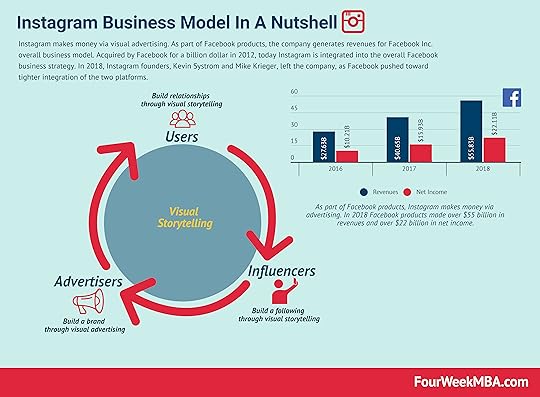
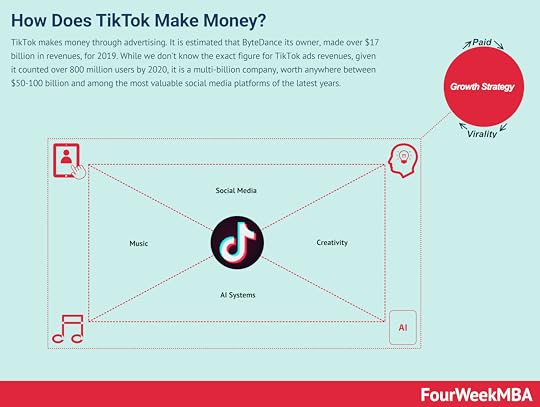 Reddit vs Twitter
Reddit vs Twitter
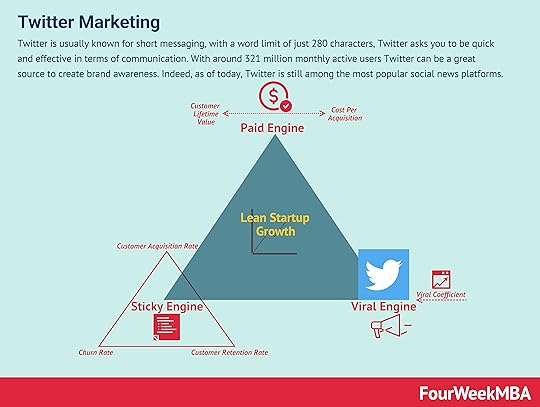
Business Models To Read Next: Amazon, Google, Facebook, Instagram, TikTok, Twitter.
Main Free Guides:
Business ModelsBusiness StrategyBusiness DevelopmentDigital Business ModelsDistribution ChannelsMarketing StrategyPlatform Business ModelsTech Business ModelThe post 10 Business Models Compared appeared first on FourWeekMBA.
Alexa Review
Alexa is another software suite and online platform to meet all the marketing tool needs you will have. Alexa is a part of the world famous Amazon.com and given their experience with cloud and web services, Alexa can be thought of as a worthy competitor to all the above mentioned tools. Alexa focuses on delivering the most meaningful and richest analytics tools for their users. Amongst, digital marketers Alexa is most known for the quality of data analytics and the way they represent these results. Therefore, if you were working in a company with a non-technical management, Alexa would be your best bet to explain key metrics to the management in a simple yet concise manner. Like HubSpot, Alexa is also an all in one tool for marketers, agencies and businesses alike and comes equipped with a wide variety of tools. However, we are going to focus on the marketing related solutions provided by Alexa. These include;
Content ResearchCompetitive Web AnalysisTarget Audience AnalysisKeyword ResearchSEO AnalysisCheck BacklinksAPIContent ResearchAlexa’s content research tool helps marketers channel their content in a way that it rises above all the competition. By helping you find the most shared articles on social media platforms about your niche, Alexa gives insights that help you discover unique angles in order to create new content. The content research tool can do everything from helping you discover successful content, finding high engagement topics, finding competitors top content, identifying keyword gaps, identifying content leaders to improving share of voice and developing domain experience.
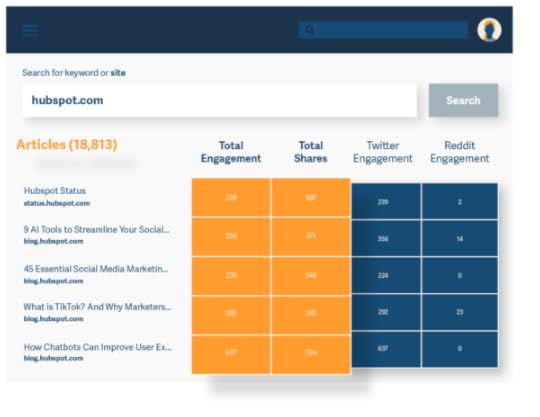
Alexa Content Research
Competitive Website AnalysisAlexa’s competitive website analysis tool helps you outperform your competition in everything that is significant in the world of digital marketing from traffic and ranking on SERPs to backlinks and keywords etc. It helps you benchmark your sit against your top competitor, find gaps in your strategy, identify their strengths and weaknesses and then work on those to quickly replace them. The competitive web analysis tool does a multitude of jobs from finding the top competitors in your niche, comparing your website’s traffic with theirs, comparing your content with theirs, comparing share of voice, competitor’s keywords to finding their backlinks and carrying out detailed analysis of their websites to identify their strategies.

Competitive Website Analysis
Target Audience AnalysisAlexa’s target audience analysis tool is a very unique solution to understanding your audience. No other SEO software suite offers a similar tool or functionality since audience analysis for the most part has been overlooked as a significant metric to increase your website’s rank and resultantly increase your sales revenue. Alexa’s target audience analysis tool helps users identify new and interesting ways to engage the audience. By using this tool, you not only focus the most searched keywords etc. but also focus on what customers actually want and what kind of content they care about. Target audience analysis is extremely important in increasing your website’s retention rate as we discussed before that blindly chasing keywords does no good as long as the content does not fulfill user needs. The target audience analysis tool covers all aspects of audience analysis from finding out your target audience, reaching them, engaging you audience, converting them into customers, increasing share of voice to identifying industry leaders and finding unknown competitors.
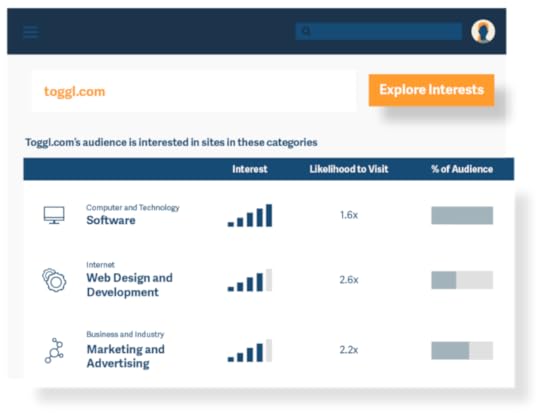
Alexa Target Audience Analysis tool
Keyword ResearchThe keyword research tool integrated into Alexa helps you find powerful keywords both for SEO and PPC, in order to drive more traffic and make your research strategy more fruitful. Keyword research helps you identify your competitor’s ranking keywords, find out which one of them have high-value buyers and then find gaps in your keyword profile based on the results. The keyword research tool also helps you find easy to rank keywords, find your SEO competitors, compare your share of voice and search traffic and analyze site keywords.
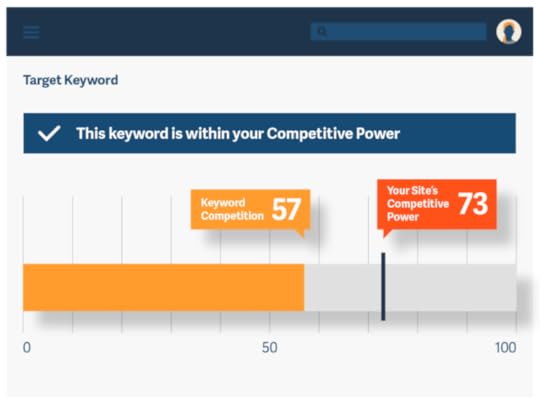
Alexa Keyword Research Tool
SEO AnalysisThe SEO analysis tool like any other SEO software suite helps you optimize your website’s organic traffic and elevate your website’s rank in the SERPs of whatever search engine it is that you are working with. The SEO Analysis tool can help your website with important tasks such as checking technical SEO, finding and prioritizing keywords, optimizing on-page SEO, evaluating backlinks and analyzing search traffic.
The two other relevant tools integrated into Alexa include a backlink checker, which analyzes the backlink profile of your and your competitor’s website and the API, which is a vast repository of web traffic information available to developers.

Alexa SEO Analysis tool
Main Free Guides:
Business ModelsBusiness StrategyBusiness DevelopmentDigital Business ModelsDistribution ChannelsMarketing StrategyPlatform Business ModelsTech Business ModelThe post Alexa Review appeared first on FourWeekMBA.
Ahrefs Review
Ahrefs is another popular SEO software suite that comprises many useful tools for link building, keyword research and other SEO related tasks. Ahrefs was originally launched in 2011 as a tool to analyze backlinks but over the time, the number of tools that it contains has increased and stands at about 20. Ahrefs is most well-known for the scale of operations that they are carrying out. The ahrefs database for backlinks is updated every 15 minutes and the crawler processes up to 8 billion web pages every day. That is more than a third of what Googlebot does, so you can imagine the scale of operations, which for an SEO tool is enormous. As discussed earlier, ahrefs now consists of some 20 odd tools to help digital marketers; however, our focus would be the five major tools that are related to SEO. These tools include;
Site ExplorerKeywords ExplorerSite AuditRank TrackerContent ExplorerLet us now discuss each of these in detail;
Site ExplorerWhile most other tools have a lot in common, in my opinion, this particular tool stands out the most and might give ahrefs a competitive advantage over other software suites. The site explorer tool in ahrefs is a culmination of three powerful SEO tools in a single interface. These three tools include organic traffic research, backlink checker and paid traffic checker. While these three tools might sound ordinary, but combined together, they form the most comprehensive of all SEO tools, the ahrefs site explorer.
The site explorer tool works in a way that all you need to do is type a domain name whether it’s yours or your competitor’s, ahrefs will show you everything there is to know about the domain. From how many keywords the website is ranking for, to what each keyword is and how much traffic each keyword is bringing. This is what is known as the organic search feature of the site explorer tool. Similarly, it also helps you dissect a website for its backlink juice. Repeat the same process and click on the backlink profile section and ahrefs will provide you with everything there is to know about a website’s backlinks from its world’s biggest index of live backlinks (over 14 trillion links). Finally, ahrefs will also show you if your competitors are buying PPC ads or any other kinds of ads and if so, what keywords are they bidding on?

Ahrefs site explorer
Keyword ExplorerAhrefs keyword explorer is while similar in nature to many other SEO tools such as MOZ or SEMrush, it does however operate differently and more than checking a keywords competition and other important metrics, it works in a way to generate new keyword ideas. By making the use of appropriate filters on the keyword explorer tool, you can have access to any set or combination of keywords from the world’s largest third-party database of keywords with almost 7 billion keywords in it. The cherry on top is that these keywords and the database is not limited to the US like in the case of most other software suites. Instead, the database comprises data from 171 countries around the world, so no matter what locality you are targeting, ahrefs has got you covered with keyword ideas and effective SEO strategies. Similarly, the database is also not limited to Google or any other single search engine; instead, it supports 10 different search engines including YouTube, Amazon, Bing, Baidu etc. Apart from all these competitive advantages, ahrefs also shows all the important metrics including accurate search volumes collected using clickstream data, keyword difficulty score, clicks, and other advanced SEO metrics such as clicks per search, % of clicks and more.
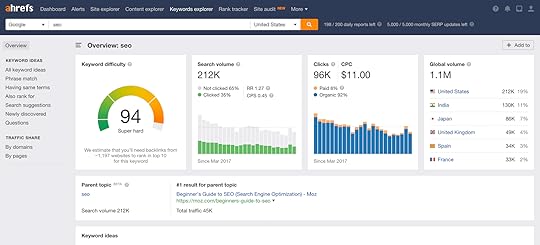
Ahrefs Keyword Explorer
Site AuditThe site audit feature in ahrefs provides an overall SEO health score of your website after crawling every single page that is publically available on your website. It also visualizes key data in charts, and flags all the potential issues and on top of them provides recommendations to fix those issues.
The site audit tool is pre-set to check websites for 100 pre-defined SEO issues. These issues include performance (slow pages, too-large HTML or CSS), HTML tags (missing, duplicate or non-optimal length of title tags, H1 tags and meta descriptions), social tags: (twitter cards and incomplete or missing Open Graph tags), content quality (unconsolidated duplicate pages, low word counts), localization, incoming links (detecting orphan pages, issues with nofollow links), outgoing links (broken pages, detecting links to redirects), resources (JavaScript, CSS and issues with images), external pages and many more.

Ahrefs Site Audit
Rank TrackerThe ahrefs rank tracker tool is built to help you monitor your website’s ranking on the Google SERPs on desktop and mobile across 171 different countries. Rank tracker is an important ahrefs tool and analyzes your SEO efforts as compared to those of your competitors and helps you identify the gaps in your strategy. The rank tracker gives you a history of visibility i.e. what percentage of the clicks on your website are from organic search traffic. It also records snapshots of your progress over time. The rank tracker utilizes 13 unique features on the basis of which it ranks your website against that of your competitor. These features include;
Sitelinks,Featured snippet,Top stories, Thumbnails,Image pack,Adwords top, Adwords bottom,Knowledge card,Shopping results,Knowledge bottom, Tweet box,Videos andPeople also ask.
Ahrefs Rank Checker
Content ExplorerThe content explorer tool of ahrefs is also of a very unique nature as it helps users generate new content ideas as well as helps them get access to the most popular articles on any given topic. You can apply all sorts of filters to narrow down your research for example; organic traffic, referring domains, domain rating, traffic value and social shares. So once you have applied any of those filters, you end up with the finest articles on top and using those articles not only can you generate new content ideas but also get first-hand knowledge on your product. Once you have gone through their content, you can identify their keywords and reverse engineer the content strategy being utilized by your competitors.

Ahrefs Content Explorer
Main Free Guides:
Business ModelsBusiness StrategyBusiness DevelopmentDigital Business ModelsDistribution ChannelsMarketing StrategyPlatform Business ModelsTech Business ModelThe post Ahrefs Review appeared first on FourWeekMBA.



